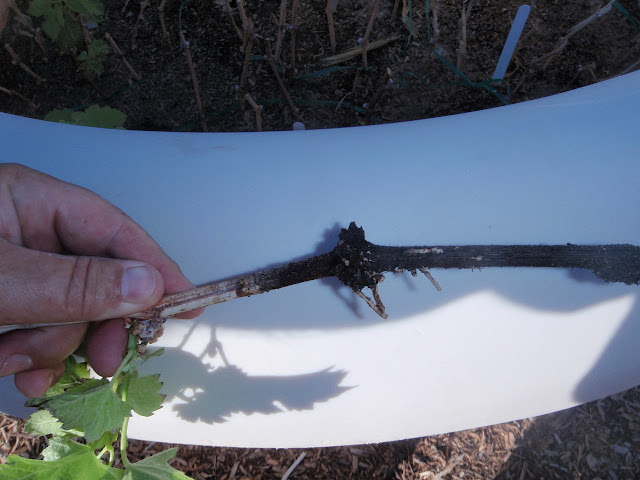Q. Your Xtremehorticulture blog is an awesome source of information! I live in Phoenix and question why my ‘Lisbon’ lemon tree is failing after two years. It flowers in the early spring as it should, and produces fruit, albeit, its fruit is nasty and dry. The canopy is about 10% of what it should be, and I suspect sunburn has been choking the plant. I think the tree is a goner and thinking of removing it.
 |
| 'Lisbon' lemon tree grown in Las Vegas and sun damage to the leaves. |
A. Yes, I think your tree may be sunburned. Give it a
chance still. At two years of age, you might be able to nurse it back to health
if you follow some easy directions.
You live in the northern part of
the Sonoran Desert. Las Vegas is in the eastern side of the Mojave Desert. All
citrus including ‘Lisbon’ lemon are subtropical; this means the tree, unlike
‘Myers’ lemon, doesn’t survive freezing temperatures very long. And in your
case our very strong desert sunlight. As the canopy increases in shade and size,
giving more shade to the fruit and the tree itself, the fruit will improve. Guaranteed.
Don’t let the fruit overripen before you pick it. That’s a no-no.
 |
| This citrus tree was limbed up too soon and the trunk may develop sunburn in hot locations. |
You might be able to get away
“limbing it up” like in the seaside and Mediterranean area of Portugal, where
‘Lisbon’ lemon probably originated, but it won’t work in the desert Southwest.
Leave the tree shrub-like the first few years until it gets established and then
slowly limb it up, making sure the trunk and limbs stay shaded, as it gets
older.
.JPG) |
| Citrus with a full canopy but exposed fruit still developed sunburn in Arizona. |
Make sure the soil has been
amended at the time of planting. This is a subtropical fruit tree and requires
more organic matter in the soil than we have in most of our desert soils. I
would not surround this tree with rock or rock mulch on the surface of the
soil. Instead, use a layer of 3 to 4 inches of wood chips keeping the wood
chips away from the trunk the first few years of its life. As the wood chips on
the soil surface decompose or rot in the presence of water, it will slowly add “organics”
back to the soil. Rock doesn’t do that.
The last thing to consider is
planting the tree on the north or east side of your landscape, or at least 3 or
4 feet away from a hot west facing or South facing wall. It may or may not need
it but it can help the tree. All fruit trees need about eight hours of sunlight
each day, but subtropical trees can do without the 120°F heat common in
Phoenix. If they are in good health, they will withstand the desert heat.






.JPG)
.JPG)
.JPG)
.JPG)
.JPG)
.JPG)